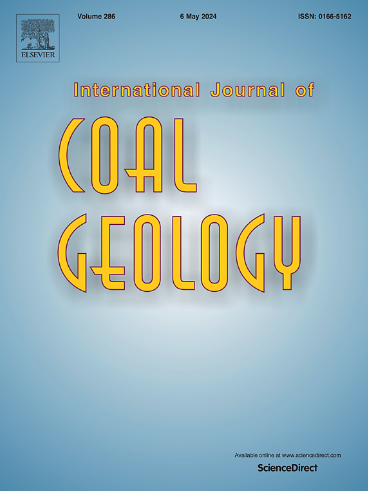A novel hybrid machine learning and explainable artificial intelligence approaches for improved source rock prediction and hydrocarbon potential in the Mandawa Basin, SE Tanzania
IF 5.7
2区 工程技术
Q2 ENERGY & FUELS
引用次数: 0
Abstract
The oil and gas industry are heavily dependent on hydrocarbon resources, and the identification of potential source rocks is a critical aspect of exploration. Accurate determination of the hydrocarbon generation potential (S1 and S2), thermal maturity (Tmax), and total organic carbon (TOC) of source rocks is essential for predicting both the quantity and quality of hydrocarbons. Traditional methods for evaluating these parameters involve laboratory analyses of drill to cuttings or core samples, which can be time-consuming, expensive, and sometimes biased. Moreover, these methods may not be feasible in cases where core material is unavailable. Therefore, this study evaluates the efficacy of machine learning (ML) models for source rock prediction and hydrocarbon potential in the Mandawa Basin, Tanzania, highlighting their application in sparse data scenarios and for complementing analytical techniques. The ML models evaluated include Group Method of Data Handling Differential Evolution (GMDH-DE), Group Method of Data Handling (GMDH), and Random Forest (RF). The results show that GMDH-DE outperforms both GMDH and RF in predicting S2, S1, Tmax, and TOC. Specifically, GMDH-DE achieved R2 values of 0.9932 (training) and 0.9794 (testing) for TOC prediction, highlighting its superior accuracy and generalization capability. For Tmax prediction, GMDH-DE exhibited R2 values of 0.9926 (training) and 0.9802 (testing), indicating a precise fit to the data and a strong correlation between input parameters and Tmax values. Furthermore, GMDH-DE demonstrated excellent performance in predicting S1 and S2 during training/testing, with R2 values of 0.9919/0.9822 for S1 and 0.9854/0.9708 for S2, showcasing its potential for assessing hydrocarbon generation capacity. The findings also suggest that the source rocks contain a combination of kerogen types II, mixed II/III and III, capable of generating both oil and gas, across a range from immature to mature thermal maturity stages.
Additionally, as GMDH-DE is a black-box model, an Explainable Artificial Intelligence (XAI) tool was integrated into this study to ensure transparency and interpretability of the model's predictions, thereby enhancing trust and reliability in its application. The XAI tool of Shapley Additive Explanation (SHAP) revealed that the model performed most accurately when wireline log measurement of bulk density (RHOB), deep resistivity (LLD), and sonic travel time (DT) were used as input variables, suggesting that these variables significantly impact the model's output.
The findings suggest that GMDH-DE is a reliable tool for source rock prediction, offering valuable insights into source rock quality, quantity, and kerogen type, especially in scenarios with sparse data or to complement traditional methods. By addressing the challenges of limited analytical data and providing robust corrections, this research contributes to advancing machine learning applications in geosciences, providing a robust methodology for improving source rock prediction and therefore to assess the charge element, which is critical for petroleum systems.
一种新的混合机器学习和可解释的人工智能方法,用于改善坦桑尼亚东南部Mandawa盆地的烃源岩预测和油气潜力
油气工业严重依赖油气资源,潜在烃源岩的识别是勘探的一个关键方面。准确测定烃源岩的生烃潜力(S1和S2)、热成熟度(Tmax)和总有机碳(TOC)对于预测烃源岩的数量和质量至关重要。评估这些参数的传统方法包括对钻屑或岩心样本进行实验室分析,这既耗时又昂贵,有时还存在偏差。此外,这些方法在芯材不可用的情况下可能不可行。因此,本研究评估了机器学习(ML)模型在坦桑尼亚Mandawa盆地烃源岩预测和油气潜力方面的有效性,强调了它们在稀疏数据场景中的应用以及对分析技术的补充。评估的机器学习模型包括数据处理差分进化组方法(GMDH- de)、数据处理组方法(GMDH)和随机森林(RF)。结果表明,GMDH- de在预测S2、S1、Tmax和TOC方面优于GMDH和RF。其中,GMDH-DE预测TOC的R2值分别为0.9932(训练)和0.9794(测试),显示出其较好的准确率和泛化能力。对于Tmax的预测,GMDH-DE的R2值分别为0.9926(训练)和0.9802(检验),表明GMDH-DE与数据拟合较好,输入参数与Tmax值之间具有较强的相关性。此外,GMDH-DE在训练/测试中对S1和S2的预测表现优异,S1的R2值为0.9919/0.9822,S2的R2值为0.9854/0.9708,显示了其在评价生烃能力方面的潜力。烃源岩具有ⅱ型干酪根、ⅱ/ⅲ型混合干酪根和ⅲ型干酪根的组合,在未成熟至成熟热成熟阶段均能生成油气。此外,由于GMDH-DE是一个黑箱模型,本研究中集成了一个可解释的人工智能(Explainable Artificial Intelligence, XAI)工具,以确保模型预测的透明度和可解释性,从而提高其应用的信任度和可靠性。Shapley Additive Explanation (SHAP)的XAI工具显示,当电缆测井测量的体积密度(RHOB)、深部电阻率(LLD)和声波传播时间(DT)作为输入变量时,模型的表现最为准确,这表明这些变量对模型的输出有显著影响。研究结果表明,GMDH-DE是一种可靠的烃源岩预测工具,可以对烃源岩的质量、数量和干酪根类型提供有价值的见解,特别是在数据稀疏或补充传统方法的情况下。通过解决有限分析数据的挑战并提供强大的校正,该研究有助于推进地球科学中的机器学习应用,为改进烃源岩预测提供强大的方法,从而评估对石油系统至关重要的充注元素。
本文章由计算机程序翻译,如有差异,请以英文原文为准。
求助全文
约1分钟内获得全文
求助全文
来源期刊

International Journal of Coal Geology
工程技术-地球科学综合
CiteScore
11.00
自引率
14.30%
发文量
145
审稿时长
38 days
期刊介绍:
The International Journal of Coal Geology deals with fundamental and applied aspects of the geology and petrology of coal, oil/gas source rocks and shale gas resources. The journal aims to advance the exploration, exploitation and utilization of these resources, and to stimulate environmental awareness as well as advancement of engineering for effective resource management.
 求助内容:
求助内容: 应助结果提醒方式:
应助结果提醒方式:


